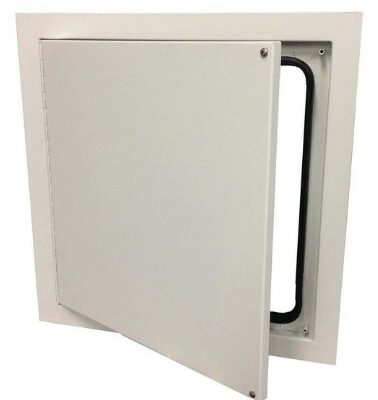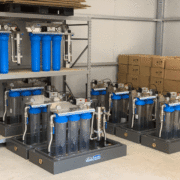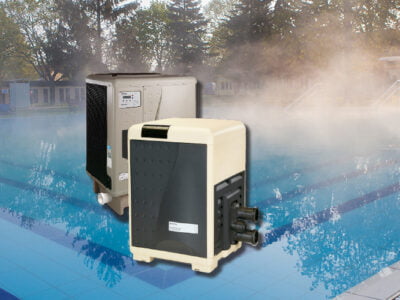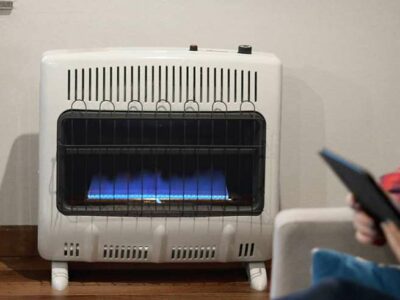Behind the scenes of any well-designed heating, ventilation, and air conditioning system lies a crucial element that often gets overlooked but plays a vital role: flush access doors. These unassuming yet indispensable components serve as the hidden gateways to the inner workings of HVAC facilities, guaranteeing seamless operation, effortless maintenance, and improved energy efficiency.
Join us as we explore the various roles of flush access doors in HVACs, learning more deeply about this special door type and how it can help your construction project best. But first, let’s briefly define the flush door access solution.
What is a flush access door?
A flush access door is a specialized panel designed to provide discreet and convenient access to the interior components of HVAC systems. You can install it within walls, ceilings, or ductwork, smoothly blending into the surrounding surface for a flush and unobtrusive appearance. Product experts construct these doors to be sturdy and durable, ensuring they can withstand the demands of regular maintenance and inspection tasks while maintaining the integrity of the HVAC utilities.
Flush access doors like BA-ADWT-PC prime-coated flush access door are available in various sizes, materials, and configurations to accommodate diverse entry points and system necessities. They may feature hinged or removable doors you can open and close quickly, enabling technicians and authorized personnel to reach integral components such as filters, ducts, dampers, coils, and other system elements for maintenance, repair, or adjustment purposes.
Flush access doors are also critical in facilitating efficient servicing and troubleshooting of HVAC systems by granting a secure and well-fitted opening. Their presence ensures that technicians can instantly access and assess the system’s inner workings, which can lessen downtime, improve maintenance excellence, and ultimately boost the HVAC system’s performance and energy efficiency entirely.
Flush access doors serve multiple valuable roles in HVAC facilities’ day-to-day operation. Here are some essential functions and their explanations:
- Maintenance and inspection: Flush access doors give a convenient entry point for technicians to carry out routine HVAC system maintenance, checks, and repairs. They allow uncomplicated access to critical elements, including filters, ducts, dampers, coils, and fan units, helping technicians to clean, replace, or repair them as needed. Regular upkeeping can secure the system’s efficient operation and extends its lifespan.
- Airflow regulation: Proper airflow is necessary for the optimal operation of your HVAC systems. Flush access doors equipped with dampers or louvers authorize technicians to adjust and regulate the airflow within the ductwork. Controlling the amount of air passing through specific areas enables these doors to help balance the system, improve adeptness, and provide consistent air distribution throughout the building.
- Energy efficiency: HVAC systems account for a substantial portion of a building’s energy consumption. Flush access doors can effectively boost energy efficiency by letting technicians inspect and seal any leaks or gaps in the ductwork. Properly sealed access doors prevent air leakage, minimizing energy wastage and ensuring that conditioned air reaches its intended destination without unnecessary losses.
- Indoor air quality: Clean and healthy indoor air quality is fundamental for occupant comfort and well-being. Flush access doors enable technicians to frequently access and replace air filters, removing dust, allergens, and other pollutants from the circulating air. By preserving clean filters, these doors contribute to improved indoor air quality, lowering the risk of respiratory issues and enhancing overall comfort.
- Safety and compliance: Flush access doors can also help your project building comply with safety standards and regulations. They give access to fire dampers and smoke detectors, permitting technicians to inspect and test these essential safety devices. These doors streamline quick access to critical system components for maintenance, repair, or shutdown procedures in a fire or emergency.
Seven flush access door types to install in HVACs
On the other hand, several types of flush access doors are available for installation in HVAC systems. Below are some common types:
- Metal access doors: Metal access doors are sturdy and durable, constructed from materials such as steel or aluminum that can provide excellent protection and security for HVAC system components.
- Plastic access doors: Made from high-quality plastic or ABS (Acrylonitrile Butadiene Styrene), these access doors are lightweight and corrosion-resistant.
- Duct access doors: Specifically designed for ductwork applications, as these doors furnish access to the internal components of the duct system, allowing for inspection, cleaning, and maintenance.
- Ceiling access doors: Construction product professionals designed these doors for flush installation with the ceiling surface, enabling effortless access to HVAC system components above the ceiling.
- Wall access doors: Similar to ceiling access doors, wall access doors are installed flush with the wall surface. They deliver access to HVAC system components usually located within the walls, such as ducts, piping, or control panels.
- Hinged access doors: The hinged doors feature hinges that permit them to swing open and closed, supplying straightforward access to HVAC system components in areas requiring frequent access, like equipment rooms or maintenance access points.
- Removable panel access doors: This unique access door features removable panels you can easily lift or slide out to access the HVAC system components.
Flush access door’s imminent role in HVAC systems
In conclusion, flush access doors are indispensable components in HVAC systems. They enable effective maintenance, manage airflow regulation, enhance energy adeptness, contribute to indoor air quality, and ensure compliance with safety standards. These doors are crucial in optimizing system performance and maintaining a comfortable and healthy indoor environment by providing effortless access to the inner workings of HVAC systems.










Comments